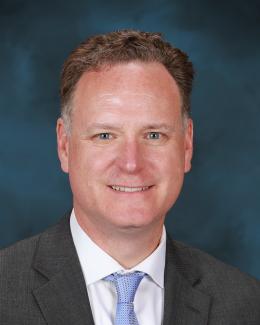
More than 50 years after the development of molten salt reactors (MSRs), the nuclear community has renewed interest in the technology because of its potential to provide the next generation of nuclear power production. Now, the US Department of Energy’s (DOE’s) Oak Ridge National Laboratory (ORNL) is producing tools that aid in the continued development of MSRs, and a team at ORNL recently received funding to advance a software package capable of calculating vital information of various MSR concepts.
“There are a lot of MSR designs, so it’s important we create a tool that is accessible to people across the nuclear field,” said Ben Betzler, reactor physics nuclear engineer at ORNL and principal investigator of the project. “We have similar codes that work with current nuclear reactors that are solid fuel systems; however, there’s not an established code out there specifically for MSRs that use liquid fuel systems.”
For Betzler and collaborators Nicholas Brown, Jeff Powers, and Brad Rearden, the research is centered on improving and coupling separate simulation tools—one that looks at neutron transport that describes the movement of neutrons within a reactor core during operation and another that analyzes fuel makeup—for complete analysis of the system.
Neutron transport—which needs to be tracked to ensure safe operation—is challenging to predict in several MSR designs because of the use of liquid fuel. In solid fuel systems, neutrons are generated in predictable locations within the fixed fuel, but that is not the case for liquid fueled systems where neutrons can be generated in the coolant loops away from the main reactor vessel. With MSR’s fuel, composition can change dramatically due to the ability to remove fuel and fission products during operation to keep the systems efficient and void of isotopes that could damage equipment.
Because the current fleet of reactors has neither of these characteristics, very few tools are able to simulate these operations. And with numerous companies working on MSR concepts, these tools are vital in determining viability of a design by identifying key issues that could arise during the life of the reactor.
“Our goal is to make the tool set as generic as possible, so it is accessible to a variety of users, easy to use, and accurate,” Betzler said. “The ultimate driver is to release the code, and whoever wants to do analysis on MSRs can take it and study the impact of different design parameters on a reactor core.”
The group will integrate the improved tools into the SCALE code system, a comprehensive modeling and simulation software suite maintained by ORNL and widely used across the nuclear energy industry for criticality safety analysis, nuclear reactor physics, irradiated material nuclide composition prediction, and radiation shielding analysis. SCALE was a clear choice because of its reach of 7,000 users worldwide and its user-friendly interface that is familiar to industry partners, nuclear regulators, and university researchers.
“Delivering these tools through SCALE allows us to assure it is usable and functions properly thanks to SCALE’s quality assurance program. In addition, we can leverage codes that already exist in SCALE,” Betzler said.
The Technology Commercialization Fund (TCF) is administered by DOE’s Office of Technology Transitions, and DOE’s Office of Nuclear Energy is funding this project. TCF awards focus on cultivating energy technologies and moving them from DOE’s national laboratories into the marketplace.
ORNL is managed by UT-Battelle for the Department of Energy’s Office of Science, the single largest supporter of basic research in the physical sciences in the United States. DOE’s Office of Science is working to address some of the most pressing challenges of our time. For more information, please visit science.energy.gov.


